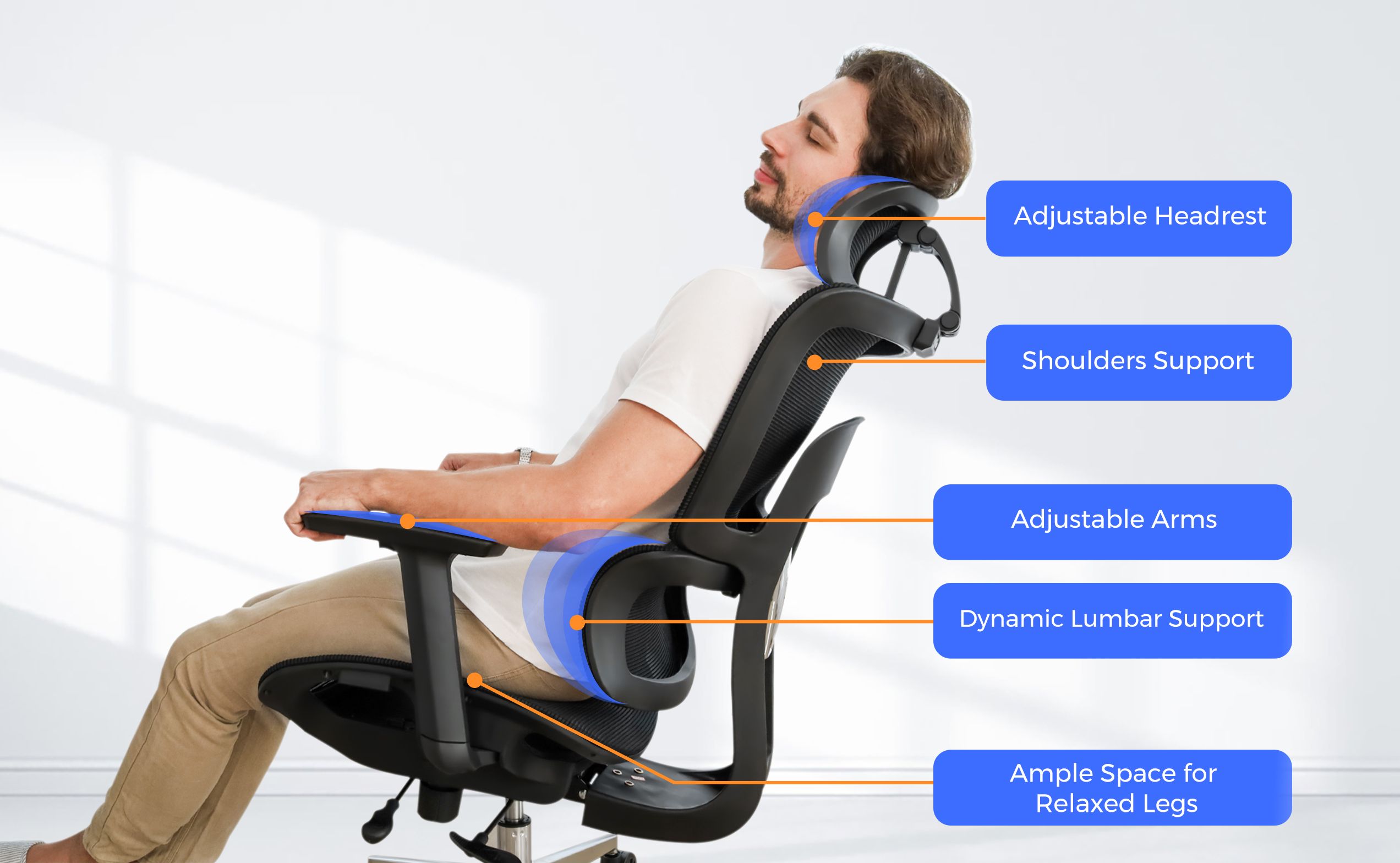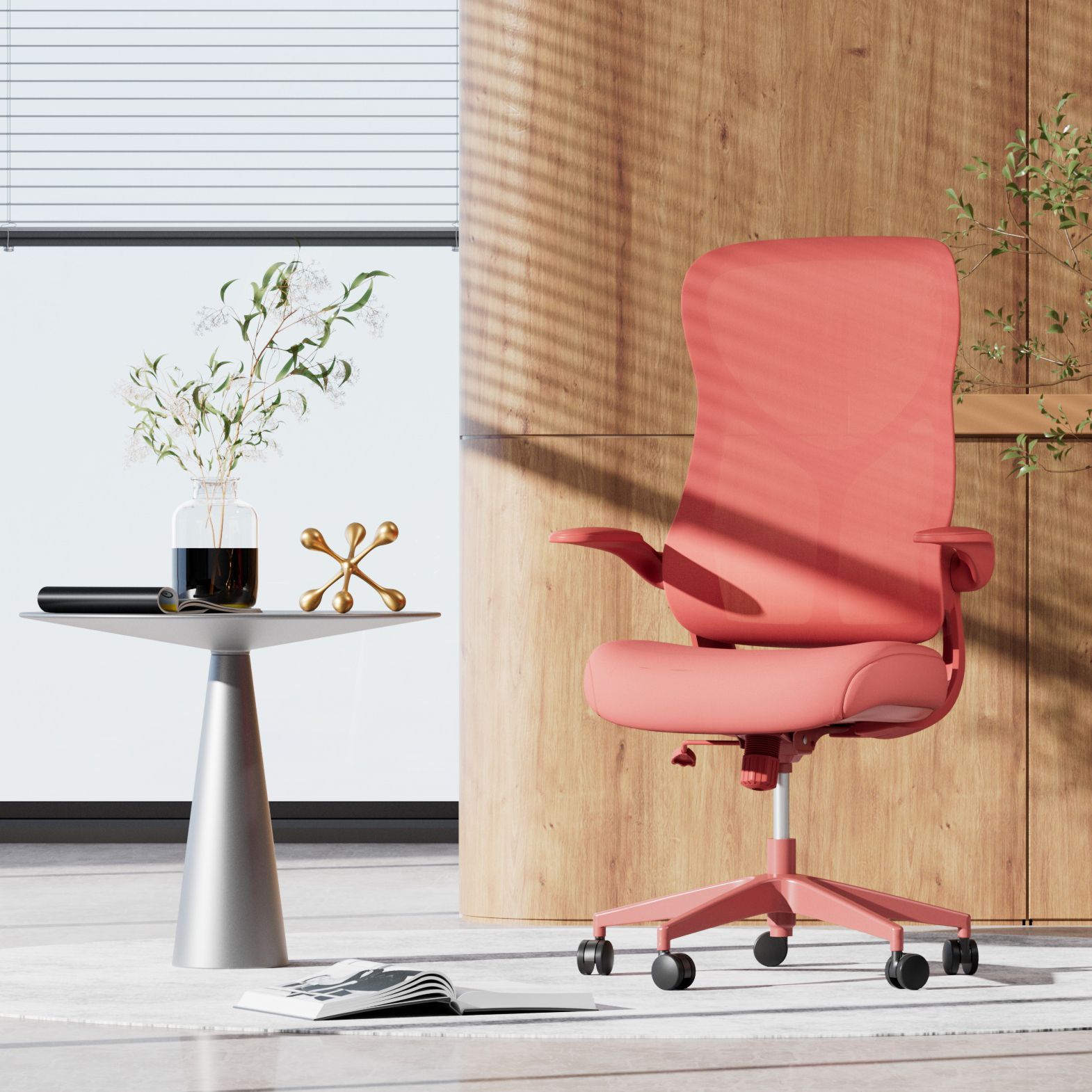When choosing the right office chair, it’s important to understand the difference between a task chair and an ergonomic chair. Task chairs are lightweight, adjustable, and suitable for short-term use, while ergonomic chairs are designed for long-term comfort and proper posture. This article explores popular models such as the eTasker ergonomic office chair, Faye ergonomic task chair, and Nouhaus ErgoTask, offering insights on their features, including lumbar support and adjustability. Whether you need a task chair ergonomic option or a chair built for all-day sitting, we’ll help you find the right fit for your needs.
Finding the right office chair is one of those decisions that can drastically improve your work life. A comfortable chair not only helps you stay productive but also supports your health by encouraging proper posture. However, with so many options out there, it can be confusing to understand what makes one chair better than another. You’ve probably come across terms like "task chair" and "ergonomic chair" before, but do you know what sets them apart?
In this blog post, I’m going to break down the key differences between a task chair and an ergonomic chair so you can make an informed decision when choosing the right ergonomic task chairs for your workspace.
What is a Task Chair?
A task chair is designed for short periods of sitting, providing basic support and functionality. Typically, these chairs are lightweight, adjustable, and perfect for smaller spaces. Whether you're at a desk for a few hours or moving between different locations, a task chair keeps you comfortable without taking up too much space. It’s a versatile and budget-friendly option for people who don’t need all the bells and whistles of more expensive ergonomic chairs.
Task chairs are often adjustable in height and may have features like swivel capability, armrests, and a tilt mechanism. However, unlike ergonomic chairs, they don’t always provide the same level of advanced support for prolonged sitting.
LSI Keywords:
- Task chair with lumbar support
- Adjustable task chair
- Task ergonomic chair
What is an Ergonomic Chair?
Ergonomic chairs, on the other hand, are designed with health in mind. These chairs offer specialized features to support your posture and minimize discomfort during long periods of sitting. Ergonomic chairs are often used by individuals who spend a significant amount of time at their desks, like remote workers, office employees, or gamers.
The key benefit of an ergonomic chair is that it encourages proper spinal alignment and reduces strain on areas like your lower back, neck, and shoulders. These chairs usually come with features like adjustable lumbar support, seat depth, backrests, armrests, and sometimes even headrests.
In short, ergonomic chairs are built to promote comfort and prevent long-term health issues caused by sitting for extended periods. If you’re working long hours or have specific health concerns, an ergonomic chair is worth the investment.
LSI Keywords:
- Task ergonomic chair
- Ergonomic desk chair
- Lumbar support ergonomic chair

Key Differences Between Task Chairs and Ergonomic Chairs
Now that we’ve defined both types of chairs, let’s explore the key differences that set them apart. These differences are mainly related to comfort, adjustability, design, and price.
1. Comfort and Support
Task Chair: While a task chair provides basic comfort, it doesn't prioritize long-term support. If you're someone who works at a desk for a few hours a day, a task chair may offer enough comfort for the short term, but it won’t prevent discomfort after prolonged sitting.
Ergonomic Chair: Ergonomic chairs are built with a focus on support. They are designed to prevent discomfort and promote better posture during extended periods of sitting. Features like lumbar support, adjustable armrests, and customizable seat depth help ensure that your body stays in a neutral position.
2. Adjustability
Task Chair: Most task chairs offer basic adjustability, like height and tilt. However, they lack the level of fine-tuned customization that ergonomic chairs provide.
Ergonomic Chair: Ergonomic chairs go a step further with multiple adjustment options. Besides height, tilt, and swivel, you can often adjust lumbar support, armrest height, backrest angle, and even the depth of the seat. This level of adjustability allows for a fully customized seating experience.
3. Design and Features
Task Chair: Task chairs are usually more compact and lightweight, making them ideal for smaller spaces. They tend to have a simpler design with fewer features.
Ergonomic Chair: Ergonomic chairs are larger and often come with more advanced features, such as contoured backrests, headrests, and built-in lumbar support. While they may take up more space, they are designed for maximum comfort and support.
4. Price
Task Chair: Task chairs are typically more affordable because they don’t have as many high-end features. If you’re looking for an entry-level option that meets your basic needs, a task chair will do the trick.
Ergonomic Chair: Due to their advanced features and superior comfort, ergonomic chairs are usually more expensive. However, if you spend a lot of time sitting, the investment may be worthwhile.
5. Durability
Task Chair: While task chairs are generally durable for light to moderate use, they may wear out faster under heavy, daily use compared to ergonomic chairs.
Ergonomic Chair: Ergonomic chairs are built for long-term durability. They are designed to withstand hours of sitting, making them a better option for people who spend long stretches of time at their desks.

Popular Task and Ergonomic Chairs: A Closer Look
If you’re interested in finding the perfect task or ergonomic chair for your workspace, here are some popular models to consider.
1. eTasker Ergonomic Office Chair
The eTasker ergonomic office chair is a fantastic choice if you're looking for a comfortable and adjustable task chair. It features lumbar support, adjustable armrests, and a breathable mesh back to keep you cool during long hours of sitting. This chair is designed for smaller to medium-sized spaces and offers great value without compromising on comfort. It’s an ideal choice for those who don’t want to splurge on a high-end ergonomic chair but still need some level of support.
2. Faye Ergonomic Task Chair
The Faye ergonomic task chair is a stylish and functional option for people who want a versatile task chair that supports the back while maintaining a compact design. With adjustable features and a supportive backrest, the Faye chair offers just the right amount of comfort without going overboard with features. It's perfect for home offices or spaces where you need something practical but comfortable.
3. Nouhaus ErgoTask
The Nouhaus ErgoTask chair is a hybrid between a task chair and an ergonomic chair. It’s designed for people who need basic lumbar support but don’t want to go all out with an expensive ergonomic chair. This chair offers adjustable armrests, lumbar support, and a flexible backrest, making it a great option for those looking for something in between.
4. Rische Ergonomic Task Chair
The Rische ergonomic task chair is another solid option for people who need a chair that balances comfort and adjustability. With its mesh backrest and lumbar support, it offers just enough comfort for people who work long hours at their desks. It’s perfect for those who want to enhance their workspace without investing too much money into a high-end ergonomic chair.

How to Choose the Best Ergonomic Office Chair for Your Space
When it comes to choosing the best chair, consider the following factors:
- Space: If you're working in a small area, opt for a compact task chair or an ergonomic chair designed for tight spaces.
- Time Spent Sitting: If you're seated for long periods, an ergonomic chair will provide better support. If you're only sitting for a few hours a day, a task chair may suffice.
- Budget: Task chairs are more budget-friendly, while ergonomic chairs come at a higher price but offer long-term comfort and support. In this way, maybe a room and board desk chair is suitable, and the best inexpensive office chair is also a good choice.
For those looking for a chair that fits well in smaller spaces, check out the ergonomic office chair for tight spaces. It offers both comfort and support in a compact design.
LSI Keywords:
- Chair for small spaces
- Comfortable office chair for tight spaces
If you’re in need of a chair that suits bigger frames, consider to make a chair taller, which provides ample room and extra support.
FAQs
Q: What is the main difference between a task chair and an ergonomic chair?
A: The main difference is that ergonomic chairs provide advanced features to support your posture for extended periods of sitting, while task chairs offer basic comfort for short-term use.
Q: Are task chairs good for people with back problems?
A: Task chairs can be comfortable for short-term use but lack the advanced support features that ergonomic chairs offer, which are specifically designed to help with back problems.
Q: Can I use an ergonomic chair in a small space?
A: Yes! There are ergonomic chairs designed for smaller spaces, such as the ergonomic office chair for tight spaces.
Q: What should I look for in an ergonomic chair?
A: Look for features like adjustable lumbar support, seat depth, armrest adjustments, and a breathable backrest. These features are essential for maintaining comfort and support.












































